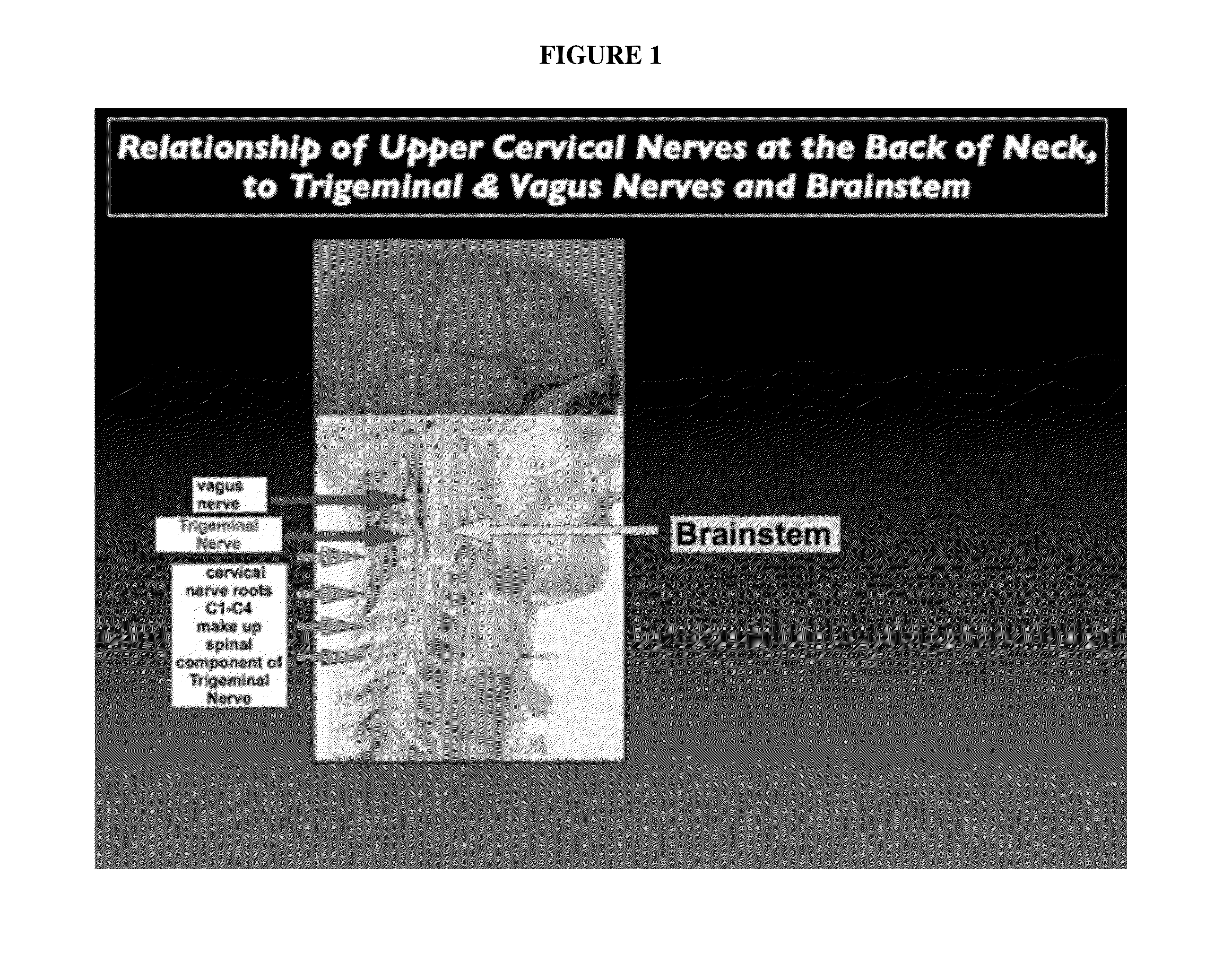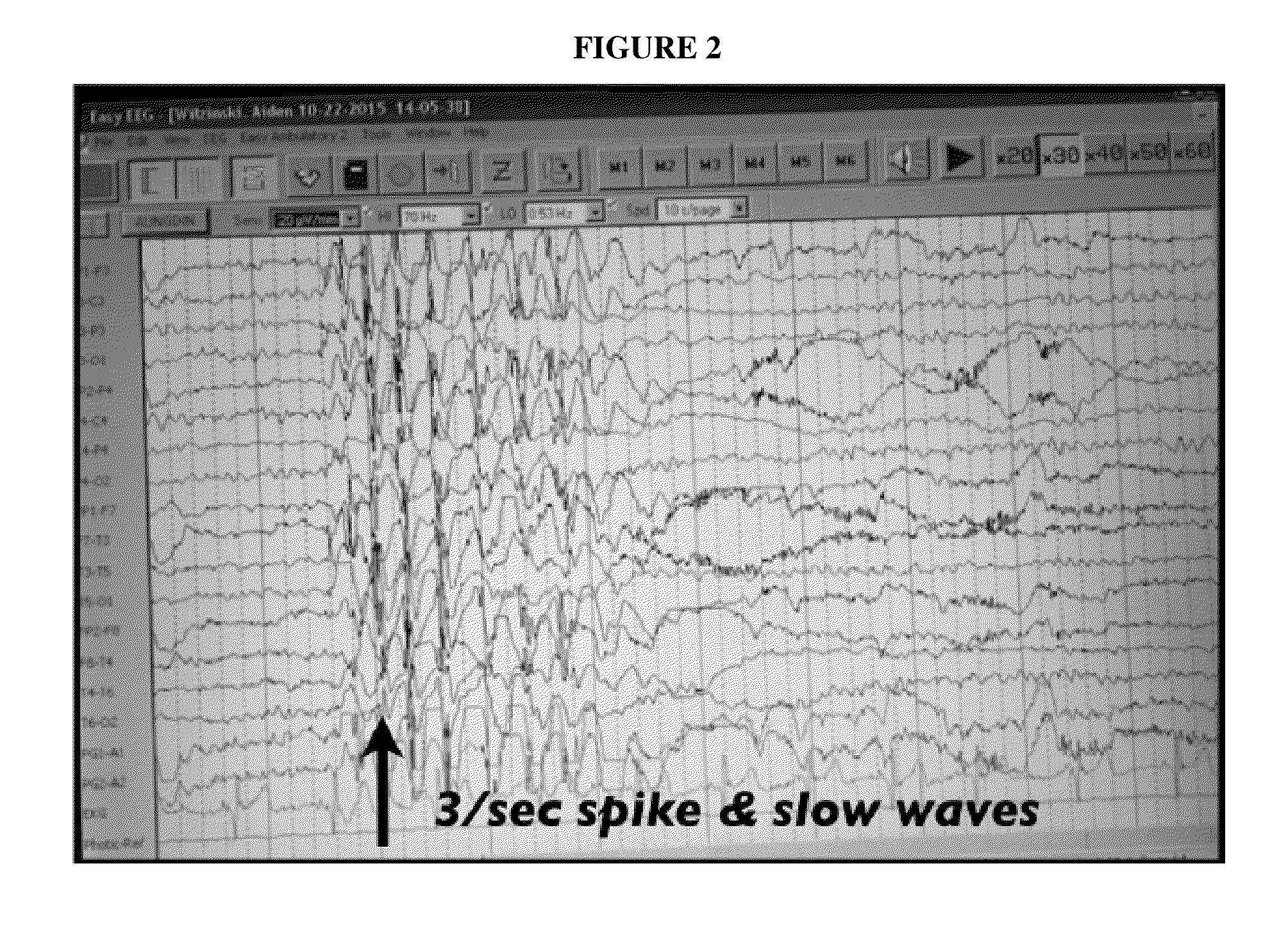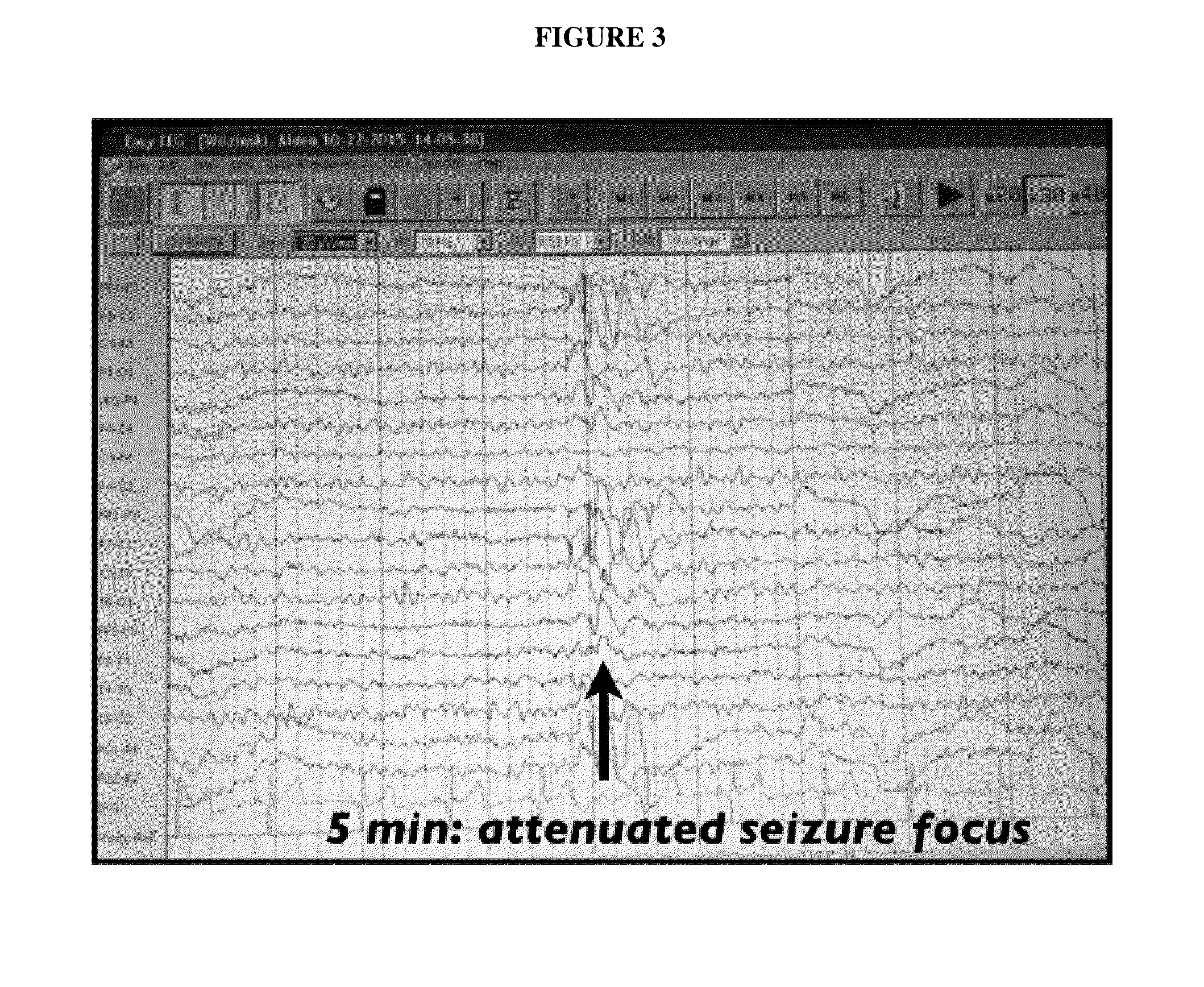Topical regional neuro-affective therapy with cannabinoids
a neuroaffective and cannabinoid technology, applied in the field of topical regional neuroaffective therapy, can solve problems such as abuse and labeling, and achieve the effect of modulating afferent neural inpu
- Summary
- Abstract
- Description
- Claims
- Application Information
AI Technical Summary
Benefits of technology
Problems solved by technology
Method used
Image
Examples
example 1
Topical Formulation
[0218]An aqueous based cannabidiol cream is produced using Lipoderm® as the carrier. Lipoderm® / LIP is a commercially marketed compounding agent (from PCCA, Pharmaceutical Compounding Centers of America) having the following ingredients: Ethoxydiglycol, Water (Aqua), Glycerin, C12-15Alkyl Benzoate, Glyceryl Stearate. Dimethicone, Cetearyl Alcohol, Cetearyl Glucoside, Polyacrylamide, Cetyl Alcohol, Magnesium Aluminum Silicate, Xanthan Gum, Aloe Vera (Aloe Barbadensis), Tocopheryl Acetate (Vitamin E Acetate), Prunus Amygadalus Amara (Bitter Almond) Kernel Oil, Vitis Vinifera (Grape) Seed Extract, Triticum Vulgare (Wheat) Germ Oil, Retinyl Palmitate (Vitamin A Palmitate), Ascorbyl Palmitate (Vitamin C Palmitate), Pro-Lipo Multi-emulsion Liposomic System, Tetrasodium EDTA, Phenoxyethanol, and Sodium Hydroxymethylglycinate. The concentration is 4 mg of CBD in 1 ml of Lipoderm. Lipoderm is a whitish cream with no smell. The cannabinoid drug(s) are incorporated into the L...
example 2
[0219]A 60 g topical formulation of CBD is prepared by incorporating 2.2 g CBD (CBD-RSHO-Clear 43.5%), 20 g Pluronic 20%, 40 g Carbomer hydroalcoholic gel and 1 ml ethyl alcohol to obtain a CBD topical formulation having a 1.6% concentration of CBD.
example 3
Oil-Based CBD
[0220]A 30 g topical formulation of CBD is prepared by incorporating CBD oil, Dimethyl sulfoxide 3 ml and enough base for total quantity of 30 grams. The CBD is incorporated in a concentration sufficient to yield an end product having a CBD concentration of 0.75%, 1%, 1.5%, 2% and 3%. The topical formulation is in the form of a cream. The oil-based CBD includes CBD oil commercially available from CannaVest. A unit dose of the topical CBD cream is from about 0.5 to about 1 g, with respect to formulations having a CBD concentration from 1.5%-3%. After initial application, the topical CBD formulation can be applied to the back of the neck of the human patient once a day, twice a day, three times a day, or four times a day depending on the condition to be treated and its severity.
PUM
| Property | Measurement | Unit |
|---|---|---|
| Fraction | aaaaa | aaaaa |
| Fraction | aaaaa | aaaaa |
| Fraction | aaaaa | aaaaa |
Abstract
Description
Claims
Application Information
 Login to View More
Login to View More - R&D
- Intellectual Property
- Life Sciences
- Materials
- Tech Scout
- Unparalleled Data Quality
- Higher Quality Content
- 60% Fewer Hallucinations
Browse by: Latest US Patents, China's latest patents, Technical Efficacy Thesaurus, Application Domain, Technology Topic, Popular Technical Reports.
© 2025 PatSnap. All rights reserved.Legal|Privacy policy|Modern Slavery Act Transparency Statement|Sitemap|About US| Contact US: help@patsnap.com



